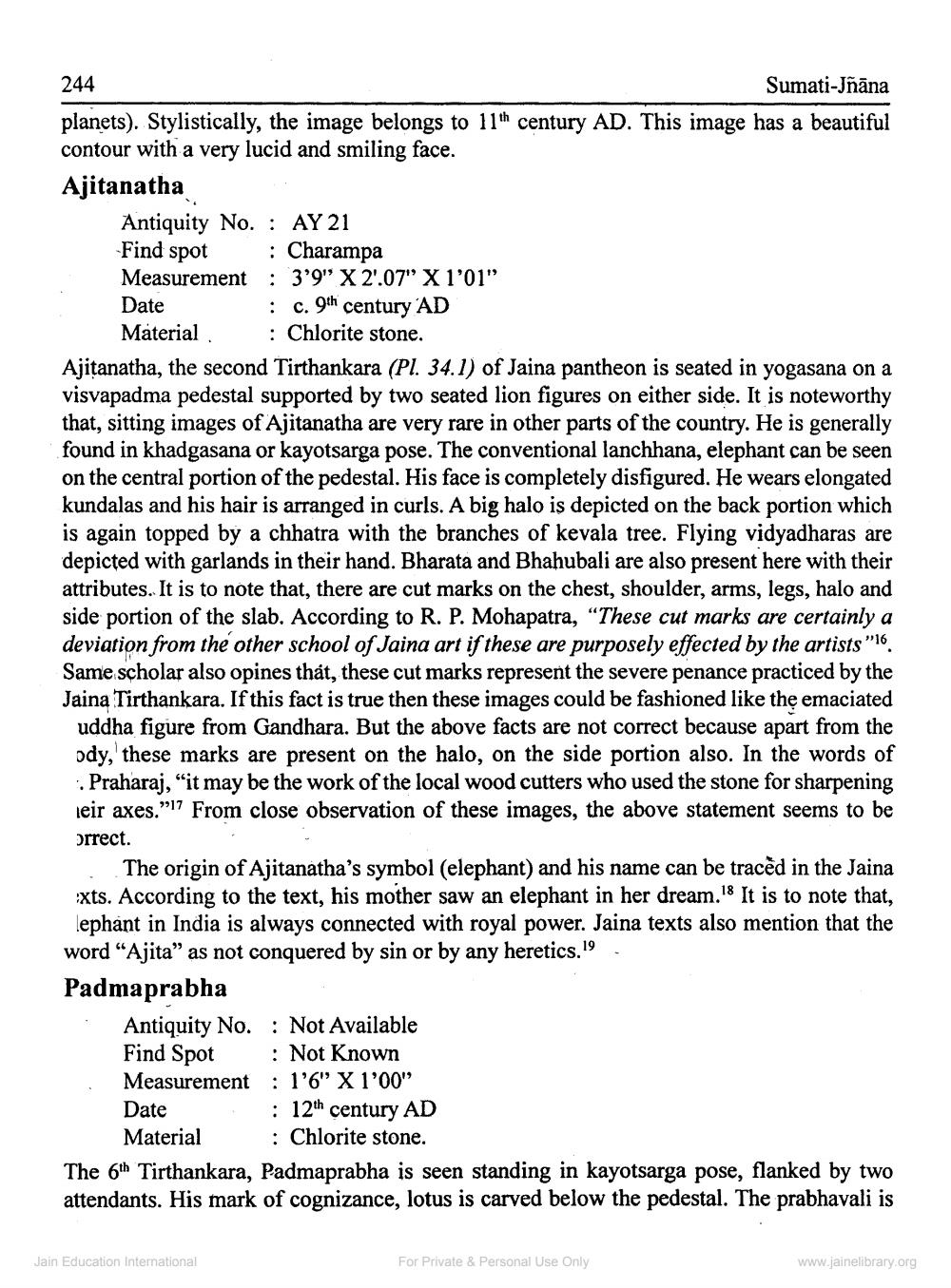________________
244
Sumati-jñāna planets). Stylistically, the image belongs to 11th century AD. This image has a beautiful contour with a very lucid and smiling face. Ajitanatha
Antiquity No. : AY 21 Find spot : Charampa Measurement : 3'9" X 2.07" X 1'01" Date
: c. 9th century AD Material : Chlorite stone. Ajitanatha, the second Tirthankara (Pl. 34.1) of Jaina pantheon is seated in yogasana on a visvapadma pedestal supported by two seated lion figures on either side. It is noteworthy that, sitting images of Ajitanatha are very rare in other parts of the country. He is generally found in khadgasana or kayotsarga pose. The conventional lanchhana, elephant can be seen on the central portion of the pedestal. His face is completely disfigured. He wears elongated kundalas and his hair is arranged in curls. A big halo is depicted on the back portion which is again topped by a chhatra with the branches of kevala tree. Flying vidyadharas are depicted with garlands in their hand. Bharata and Bhahubali are also present here with their attributes. It is to note that, there are cut marks on the chest, shoulder, arms, legs, halo and side portion of the slab. According to R. P. Mohapatra, “These cut marks are certainly a deviation from the other school of Jaina art if these are purposely effected by the artists "16. Same scholar also opines that, these cut marks represent the severe penance practiced by the Jaina Tirthankara. If this fact is true then these images could be fashioned like the emaciated
uddha figure from Gandhara. But the above facts are not correct because apart from the ody, these marks are present on the halo, on the side portion also. In the words of · Praharaj, “it may be the work of the local wood cutters who used the stone for sharpening teir axes."17 From close observation of these images, the above statement seems to be orrect.
The origin of Ajitanatha's symbol (elephant) and his name can be traced in the Jaina xts. According to the text, his mother saw an elephant in her dream. It is to note that, lephant in India is always connected with royal power. Jaina texts also mention that the word “Ajita" as not conquered by sin or by any heretics. . Padmaprabha
Antiquity No. : Not Available Find Spot : Not Known Measurement : 1'6" X 1'00" Date
: 12th century AD Material : Chlorite stone. The 6th Tirthankara, Padmaprabha is seen standing in kayotsarga pose, flanked by two attendants. His mark of cognizance, lotus is carved below the pedestal. The prabhavali is
Jain Education International
For Private & Personal Use Only
www.jainelibrary.org




